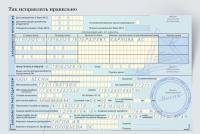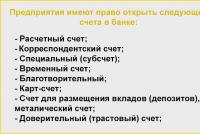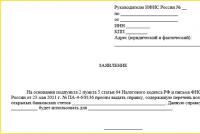Current assets of the enterprise: analysis and management
Current assets are the most liquid part of a company's assets. Skillful management of them practically guarantees financial stability and competitiveness. And for this, they must be correctly taken into account, normalized and analyzed. We'll tell you how. In the article, you can download a report that will help you monitor the effectiveness of the use of current assets.
In this article you will learn:
What are current assets
Current assets of an enterprise are resources that are used for no longer than a year or no more than one production cycle and ensure the continuous operation of the company and the production of goods, the provision of services, and the performance of work.The current assets of the organization are always within the production process, which can be divided into three main sequential steps. The first is the replenishment of raw materials and supplies. The second is the manufacture of goods or the performance of work. The third is the delivery and implementation of what the company has done to the market, receiving funds. And again, the first step is to replenish raw materials and materials with the proceeds. All elements that are directly involved in this cycle can be attributed to such funds.
Current assets include (see Figure 1):
- the entity's cash and cash equivalents;
- short-term accounts receivable;
- raw materials and materials for the manufacture of final objects of material value;
- semi-finished products of intermediate stages of the production site;
- products received at the end of the working cycle;
- Future expenses;
- VAT amount not accepted for deduction (see also, how to save on VAT when importing goods ).
How to develop standards for current assets
See how to develop a system of norms for managing current assets, what methods of rationing to use in the material "Systems of the Financial Director".
How are they different from non-current
Non-current assets of the enterprise function for a long time without changes, gradually transferring their value through natural wear and tear, if such funds are material. Typically, the period of use of these funds is more than 12 months.
Non-current include:
- intangible values, including intellectual property rights, licenses for the right to engage in certain activities, patents for inventions, as well as trademarks, brand and company reputation;
- material assets - land and objects of nature management, buildings and structures, machinery and equipment, vehicles, etc.;
- financial investments in other enterprises, as well as investments, the settlement of which occurs no earlier than in three months;
- property leased or leased.
A complete list of non-circulating funds contains the Accounting Regulation "Accounting statements of the organization" PBU 4/99, as amended on November 8, 2011.
Current assets turnover ratio
For analysis, "turnover" is used. This parameter shows the efficiency of management and the number of production cycles "money → raw materials → production → sales" (see Figure 2).
Figure 2.

This parameter does not have any specific standard. For each firm, each year this value is calculated separately, and then the indicators are compared over several years, in dynamics. Nevertheless, all industries have average values of this parameter, which, in principle, can be guided by.
If the coefficient obtained differs significantly from the industry average, then this may indicate that the organization has accumulated too much of such funds and conducted inefficiently.
In addition, it has been empirically established that capital-intensive industries show a low turnover, and the highest values are in the service sector and at trading floors. However, the trading industry does not have a “processing of raw materials and materials” stage, this is a serious difference from organizations that produce their own goods. It also affects profitability. It has been established that with high profitability, the turnover decreases, with a low rate of return, on the contrary, it increases.
The formula for calculating the turnover ratio of current assets (OA):
KO oa \u003d Revenue / OA sg,
where KO oa - OA turnover ratio;
Revenue - an indicator of line 2110 of the income statement (profit and loss statement);
ОА сг - ОА average annual.
Formula for calculating the average annual value of VA:
OA sg = (OA ng + OA kg) / 2,
where OA ng - OA at the beginning of the year;
OA kg - OA at the end of the year.
The following formula is used to calculate turnover:
About oa \u003d 365 / KO oa,
where O oa is the OA turnover ratio in days.
Rationing of current assets
Managers need to understand how much cash, raw materials, materials, etc., is needed to maintain the planned output level of the product range. The production of goods is carried out according to pre-approved technological processes, with established parameters for the consumption of fuel, energy and other resources. Each process is carried out according to certain plans with known flow rates, so rationing underlies the determination of these volumes.
All components are subject to rationing, including finished products, deferred costs, actual raw materials and materials, as well as semi-finished products at all stages of creating finished products.
NOA \u003d Npa + Nnp + Nrbp + Nzgt,
where NOA is the OA standard;
Npr - standard PR;
Nnp - the standard of work in progress;
Nrbp - the standard for deferred expenses;
Nzgt - standard stock of finished goods.
The OA standard is calculated in rubles. Standards for production resources, work in progress, stock of finished goods are calculated in rubles, in physical units that determine the quantity, weight, volume, length, etc. (meters and cubic meters, kilograms, tons), as well as in days.
An important parameter by which stocks are created is time. Each enterprise must know how long it can work between two deliveries of production resources, have safety stocks in case of problems in logistics, calculate the time for the necessary technological preparation of raw materials and materials.
The formula for calculating the time for which you need to have AP:
NVZa \u003d NZt + NZs + NZp,
where NVZA is the time standard for the stock of an asset;
NZt - current stock rate;
NZs - insurance reserve rate;
NZp - preparatory stock rate.
The current stock rate depends on the time that elapses between two deliveries of production resources. They can come both from the external environment, from suppliers, and be their own semi-finished products at different stages of the work site. Typically, the inventory rate should allow the plant to be loaded for a period that is defined as half the waiting time for a re-delivery.
The insurance reserve norm is formed to protect the company from violations of the delivery dates of the necessary raw materials, materials or semi-finished products by suppliers. Half of the current stock rate is usually used to establish the safety margin. Or, empirically, the maximum period of delay in deliveries is set and the stock rate for this time is calculated, which subsequently becomes the insurance rate.
A preparatory stock rate is necessary if the delivered raw materials or materials cannot be immediately put into processing or for the execution of work orders. This happens in cases where the technical process provides for their additional training. For example, when it is necessary to bring the temperature and humidity back to normal, sort them, complete them, etc. Thus, the preparatory stock rate depends on the time from the moment the raw materials and materials are delivered to the enterprise and until they are actually involved in processing.
Analysis of current assets
For analysis, they must be broken down by the level of liquidity and risks.
|
Liquidity / risks |
Assets |
|
Absolute liquidity, minimal risk |
|
|
Highly liquid, low risk |
|
|
Medium liquid, medium risk |
|
|
Illiquid, high risk |
|
The greatest attention should be paid illiquid assets with a high degree of risk. Their increase suggests that the money invested in the business does not give the proper return due to the inhibitory effect of this group. To analyze the dynamics of current assets, the ratio of highly liquid and low liquid groups is used.
The next important aspect of the analysis is the control of the level of these resources, rechecking their norms, checking their actual value. Excessively high standards can lead to overstocking, reinsurance and, as a result, the transition of material resources to the category of stale ones. And this is a direct way to reduce financial stability and unnecessary costs. Equally dangerous are too low stock rates. In any emergency situation - delivery delays, supplier change, logistical errors, etc., the lack of stocks of such resources will lead to forced downtime and a decrease in the company's planned output of goods.
Another important area is the control of the production of finished products. They must be produced according to a developed and accepted plan for the manufacture of goods, with a predictable volume of consumption of products by the market and a predictable volume of payments. Without taking into account these and other components, the firm may face the problem of obtaining cash from the results of its work.






